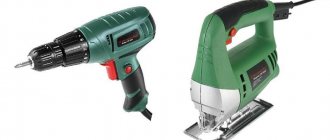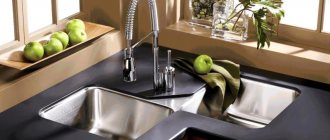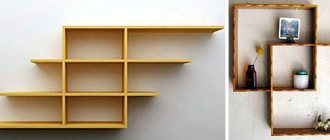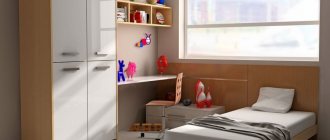Types of kitchen cabinets
Kitchen furniture can be:
Floor-standing
This furniture forms the basis of any kitchen. It is in such cabinets that various types of kitchen furniture, utensils, and household appliances are stored. The lower cabinets can contain large appliances such as refrigerators, dishwashers, washing machines, etc.
Mounted
Such furniture is fixed above the bottom - 0.4–0.5 m higher. Suitable for storing small household appliances, some products, and various utensils. Often, with the help of wall cabinets, gas pipes and other elements that are hidden from prying eyes are masked. The height of kitchen cabinets should depend on human height, so that, without replacing a chair, you can take the necessary thing from the top shelf.
Corner
The use of such cabinets is carried out in kitchen furniture models that move from one wall to another. The advantages of these modules lie in the maximum use of the angle using draw-out models and similar elements.
Peculiarities
The peculiarity of the dimensions of gas stoves is that in general they can be called the same type: the height is about 87 centimeters, the depth fluctuates around 52 cm, the standard width varies from 50 to 60 centimeters. The noted indicators are due to the standards associated with the layout of apartments and kitchens. The area of the room for eating in multi-storey buildings had certain small standards. In this regard, wide gas stoves, as well as tall ones, were simply not in demand. To be fair, it should be noted that the developers nevertheless provided models that allow, if necessary, to adjust the height of the slabs. The emphasis was placed on adjustable legs, which also helped in cases with uneven floors.
Standards for kitchen unit dimensions: depth, width, height
The main dimensions and their configuration in typical rooms are dictated by the dimensions of the room.
For example, in five-story buildings of the “Khrushchev” type, the dimensions of the furniture, if the kitchen layout is in the form of the letter “L,” are 2.6 x 1.2, in five-story buildings of the “Brezhnev” type - 2.8 x 1.8.
For the height of the cabinets, the height of the ceilings in the apartment matters. The previously mentioned “Khrushchev” has ceilings that can be easily reached by hand. Therefore, the set can have a standard height of 215 cm. “Brezhnevka” and standard apartments of modern construction can have parameters greater than 240 cm when using the top row. “Stalinka” has a height of three meters, which allows the use of several elements stacked on top of each other in the headset. This mezzanine will accommodate all the utensils.
Differences in standard box sizes
The dimensions of a standard kitchen set depend on human height. In addition to this indicator, technical factors are taken into account in the form of the standard arrangement of electrical wiring, water pipes, etc. All features cannot be taken into account, therefore, if some parameters do not match, you can adjust them to the interior and differences of the kitchen. Standard sizes of kitchen cabinets depend on the location of the furniture.
Bottom furniture
Has the following parameters:
- The height of the lower cabinets is 0.85 m;
- The height of the lower base is 100 mm;
- Calculation of the thickness of the cut tabletop depends on the manufacturer’s brand and the expected loads. It will be 2.8, 3.8, 4 cm;
- The depth (width) of the cut tabletop from one edge to the other adjacent to the wall is 600 mm;
- Depth - at least 0.46 m (if the drawers are retractable, then the drawer takes up 45 cm and 1 cm acts as free space to the wall of the module located at the back), on average the popular sizes are 56-58 cm;
- The depth of the decorative plinth is 20-50 cm;
- The tabletop should protrude from the front by a maximum of 30 mm, and a minimum of 5 mm. The presence of the protrusion is explained by protection from contamination;
- The back of the tabletop should have a protrusion of several centimeters. This gap allows the placement of gas, water pipes and electrical conductors between the wall and the cabinet;
- The facade should have a width of 30 to 45 cm (a cabinet with two facades will be inconvenient to use);
- The height between shelves should be from 20 to 40 cm (the home owner can install shelves according to his preferences).
The 0.6 m countertop is the most popular and standard. The depth of the kitchen cabinet in this case is 46 centimeters. A smaller worktop is impractical, because the kitchen must have a large work surface; appliances are built exactly to this size. Exceptions are extraordinary miniature rooms in which large furniture cannot be placed. In such cases, the tabletop can be trimmed to the size required.
But the main thing is that such a kitchen does not accept sinks and hobs of standard sizes; it is better to prefer a smaller size, which can now be easily found.
The countertop, which is 0.90 m, is used infrequently; it will look harmonious in spacious, large kitchens with an individual design. The depth of the lower kitchen cabinets under such a countertop can be 76 cm. In a small kitchen, it is worth eliminating such dimensions, because of them the space is reduced - the kitchen will be too bulky, visually displacing all the other furniture from the room.
Worktops with a width of 120 cm are only suitable for professional kitchens, islands and dining tables.
The only convenience of such a countertop is that it provides access to several cabinets from different sides at once. It will fit perfectly only into large spacious rooms.
Upper furniture
Upper cabinets are subject to the following standards:
- Height – from 79 to 90 cm.
- Depth - 0.3 m (if the tabletop is wider, then usually the depth of the top row is equal to half of it).
- The distance from the apron area (working surface) is no less than 450 mm (this parameter can be easily adjusted to a comfortable one, based on the height of the housewife. It can be 55–60 cm).
- The width of the fronts of the upper cabinets is identical to the lower row.
- The distance to the hood should be 70–75 cm for an electric hob and 75–80 cm for a gas hob.
- The height of the upper modules from the floor is permissible no more than 210 cm.
You should remember the main parameters for wall cabinets - the distance from the bottom to the shelves at the top is 45 cm. This will allow you to conveniently place all the necessary household appliances on the work surface. You should not worry about hitting your head on furniture, because it is much smaller in depth than the floor part and will not interfere with work.
Wall-mounted kitchen unit modules can be arranged even higher, customizing them to suit any person individually. You should not hang cabinets too low; it will be inconvenient to use the work surface.
Corner furniture
And the corner cabinets have slightly different standard sizes:
- The walls on the sides, running parallel to the walls, are 60 cm, excluding a further cut of 13 cm in length.
- The walls on the sides are adjacent, each of which is 31.5 cm.
- The front section, which is larger in width, is 38 cm.
- The rear, smaller cut, entering the corner between the two walls, is 16.5 cm.
When determining the size, one should proceed from the presence of built-in furniture, the size of the sink and hob; the physical parameters of the owners themselves also play a significant role.
Installing a kitchen unit will be optimal if the kitchen is made to order, which is quite expensive. A budget solution is to buy a ready-made kitchen with standard dimensions, knowledge of which allows you to consider all the options and give preference to the best.
The kitchen is a special room in the house, requiring a careful and thoughtful approach to organizing the workspace - choosing the size and method of placing furniture, its quantity and internal contents. The room must be functional, safe and comfortable, that is, meet basic ergonomic requirements. The selection of furniture sizes and options for its location occurs at the project development stage, taking into account the area, configuration and planning features of the room. You can purchase a ready-made set for a typical kitchen by selecting the required number of modules. For rooms with a non-standard layout, it is better to order furniture according to individual sizes. The same applies to small-sized kitchens, where it is not possible to install standard-sized modules. Today’s material will tell you what the standard sizes of kitchen cabinets are and the nuances of properly organizing your workspace in the kitchen.
Number of burners and shape
Consumers often buy a range or cooktop with four burners. But this amount is not always necessary. For a family of two or three people, 2 burners are often sufficient.
A stove with 3 or more burners is necessary for a family of four or more people. The wider the panel, the more interesting its design. Cooking surfaces can have a round, five-pointed, trapezoidal, or elongated shape.
You can buy a semicircular one and place it in the corner of the headset.
There are also combined options - with gas and electric burners.
More details about choosing a gas panel in the video:
Width
If your kitchen cabinet width (about 60 cm) and countertop thickness (28-38 mm) are standard, then you won’t have any problems with the choice, because... Most options on the market are sized within furniture standards. The most common option is a square panel with 4 burners.
There is also a parameter - the width of the installation, which determines the size of the niche cut out for the panel in the countertop.
Depth
1. The standard and most common size in accordance with the depth of the cabinet is 50-60 cm. The installation depth here should also be taken into account in order to accurately install the equipment into the niche prepared in the countertop.
2. Another option is often found - the burners are located in one line in width. In this case, the depth is small 35-40 cm, and the width is from 60 cm, usually 70-85 cm.
Height (thickness)
Varies between 40-50 mm.
Types of kitchen furniture
When making standard kitchen furniture presented in stores, the average height of a person is taken into account - this makes it universal and easy to use. If a person is taller than average, then you can adjust the height of the hanging drawers and choose floor cabinets of the required height.
Furniture parameters depending on height
In the kitchen you can find 4 types of furniture.
Table 1. Types of furniture
| Name | Description |
The interior space is equipped with shelves, drawers, and other built-in modules for storing kitchen utensils and products, as well as installing built-in equipment - an oven, dishwasher and washing machine.
Video - Types of kitchen furniture
Standard in the work area
The working area is formed by three points: the sink, the hob and the space for cutting and processing food (located between the sink and the stove). It is this zone that should be located at the height that is most comfortable for you.
- The standard for work tables is 72 cm.
- Tabletop thickness 3 - 4 cm.
- The base may vary depending on your height.
The high base can be replaced:
Features of choosing furniture size: what to consider
When choosing furniture for the kitchen, take into account the area of the room - the set should not take up most of the free space, but at the same time it must be functional and meet safety requirements. This can be achieved through the correct selection of the main furniture parameters - height, depth and width.
There are several criteria that must be taken into account when choosing the size of kitchen furniture.
Table 2. Criteria for choosing the size of kitchen furniture
| An essential element of a kitchen set, the countertop of which is used as a work surface, installation location for a hob or sink, or other household equipment. | |
| Attached to the wall above the work surface. Used for storing dishes, food, small kitchen utensils, and household equipment. Some kitchen sets do not require wall cabinets, or partially replace them with open shelves. Wall cabinets are also used to install exhaust equipment and local lighting sources for the working surface. They are equipped with solid or transparent facades. | |
| It combines the lower and upper panels and is used to accommodate built-in equipment – refrigerator, oven, washing machine, dishwasher, microwave. Can also be used as a spacious storage area. | |
| It is used for L- and U-shaped arrangement of kitchen units. Allows you to save free space. |
| Illustration | Description |
Anthropometric data of the kitchen owner
Conventionally, the kitchen set can be divided into several main zones:
- The lowest one, which contains a storage area for rarely used and heavy items, equipped with drawers.
- The lower one, which is used to store cutlery and frequently used kitchen utensils.
- The middle one, in the form of a working surface, which it is advisable to leave as free as possible.
- High, which is located at eye level and is used for storing dishes, frequently used kitchen utensils and products.
- The highest, located under the ceiling and used for light, rarely used items.
Taking into account the above, first you should decide on the need to equip those storage areas that are located in difficult reach - the dimensions of the kitchen unit will depend on this.
For greater clarity, you can draw an outline of the walls and the perspective of the chosen solution
You should also measure the room and draw it to scale on a sheet of paper so that you can choose the most optimal option for arranging furniture. The main modules are cut out of paper and moved on the plan, choosing their best location.
Bottom row cabinets
As noted earlier, the bottom row of cabinets is a mandatory element of the kitchen set.
Schemes of kitchen modules
The standard sizes of cabinets included in this group of furniture are as follows:
- The total height of the lower cabinet from the floor to the top of the worktop is 850 mm.
- The height of the base or bottom point of the cabinet is 100 mm from the floor.
- The optimal depth of a base cabinet is 560 – 580 mm , the minimum value is 460 mm . When equipping a drawer, take into account that 450 mm is the length of the drawer itself and 10 mm provides free space to the rear wall of the structure.
- The depth of the tabletop depends on the depth of the cabinet and protrudes from the front by 30-50 mm , and from the back by 50-100 mm. The most popular depth is 600 mm, as it corresponds to the parameters of typical household appliances.
- The width of the facades varies from 300 to 400 mm.
- The shelves inside the cabinet should be located at a distance of 200 - 400 mm - this is the optimal value, which can be changed at the request of the furniture owner.
Ergonomics in the kitchen
Top row cabinets
Prices for different types of kitchen cabinets
Properly organizing the storage of dishes, small kitchen utensils and products will allow a thoughtful approach to choosing the size and height of the hanging modules.
Upper cabinet options
Of the main parameters of mounted modules, the following are noted:
- The height of the upper cabinet is 790 – 900 mm.
- The depth of the cabinet varies from 300 to 350 mm , in other words, it is ½ of the depth of the working surface (countertop).
- The distance from the table top to the bottom edge of the pendant module is at least 450 mm. Taking into account the height of the kitchen owner, the indicated value can be increased to 550 - 600 mm.
- The width of the fronts must correspond to the width of the fronts of the lower cabinets.
- Particular attention is paid to the distance between the hood and the equipment located underneath it. So, the distance from the gas stove should be at least 750-800 mm and 700-750 mm from the electric hob.
- The distance from the floor to the top point of the wall cabinet can be 2100 - 2500 mm.
Standard size of wall cabinets installed in the kitchen as furniture elements
Corner cabinets
Often the kitchen set has an L-shaped arrangement. This is convenient and justified in a small room area. Corner modules are also used for peninsular and U-shaped furniture arrangements. The purpose of these storage areas is no different from conventional cabinets, but the dimensions and configuration of the module are an important factor.
Dimensions of gas stoves with oven
The size of a standard gas stove is 50 or 60 cm in width, 60 cm in depth, and 85 cm in height. The stove is equipped with 4 gas burners and an oven. If a cover is included, the total height of the device increases by its value (60 cm). The dimensions can be clearly seen in the diagram:
Work triangle
Correctly selected sizes of kitchen modules are inextricably linked with their location in space - the layout of the kitchen. The sequence of arrangement of floor and wall cabinets, as well as equipment, is dictated by the technological process of food preparation, which consists of several stages: storage, washing, preparation for cooking and cooking of products. For the convenience of carrying out these stages in a short time and with minimal energy consumption, an optimal arrangement of furniture with a separate functional purpose is provided: cabinets with dishes are located near the sink, cabinets with spices, dishes and auxiliary kitchen utensils are located near the stove.
The work triangle includes three main zones:
- A work surface that includes a countertop, stove, and microwave.
- Storage area consisting of a refrigerator and freezer.
- A clean area for washing dishes and food, equipped with a sink and dishwasher.
Working triangle rule
The arrangement of zones has the following sequence: refrigerator, sink, stove. In this case, the distance between them should be comfortable, not exceeding two arm lengths.
Organization of the technological process
Additional modules
Modern sets, in addition to the usual floor and wall cabinets, may include other elements. Their parameters must correspond to the dimensions of the kitchen.
The bottle holder is a narrow and high retractable section. Ideal for storing spice bottles and bags. It is convenient to complete a set with a discrepancy in size.
The bottle holder has the following standard sizes:
- height from the floor - equal to the height of the module to which it adjoins - 80–100 cm. The bottle holder can be higher if the kitchen set includes pencil cases;
- width – 15 cm;
- The depth corresponds to the depth of the base cabinets.
A pencil case is a spacious and useful element of a spacious kitchen. It can be combined with built-in equipment, forming a kind of monolithic block, or can be placed in any part of the headset.
Its standard indicators are:
- the height from the floor is equal to the height of the upper set;
- width – 50,60, 80 cm. It is not advisable to exceed the width of the widest floor cabinet;
- the depth is equal to the depth of the bottom row.
The depth may differ slightly, but in this case the width and height must be matched exactly.
The dimensions of kitchen furniture are an important component of the ergonomics and comfort of the kitchen. Both her well-being and the quality of the food that will be prepared here depend on how well they meet the housewife’s requirements.
What does ergonomics say?
Taking into account ergonomic requirements, the main elements of furniture in the kitchen must meet the following parameters:
- With a height of 165 cm, the height of the tabletop should be 850 - 900 mm. If you are taller, then leaning towards such a surface will be uncomfortable. The height is chosen so that it is 15 cm lower than the bend of the elbow.
Ergonomics ensures the safety and comfort of using kitchen furniture
Dimensions of wall-mounted corner modules
Wall corner cabinets usually have the following dimensions:
- The side walls of the wall-hung corner module, located parallel to the kitchen wall, should be 60 cm each.
- The side walls of the wall-mounted corner module adjacent to adjacent drawers should be 31.5 cm each.
- The front part can be closed with a door or a 38 cm wide front.
- The back part is on average 16.5 cm.
Knowing the approximate standard dimensions of the kitchen unit modules, you can easily design a kitchen that is comfortable in all respects.
Arranging a kitchen space is not an easy task; it is necessary to arrange it so that it is functional and not cluttered. For this reason, when purchasing furniture for this room, it is worth considering its parameters. That is why the standard sizes of kitchen cabinets often coincide with the parameters of kitchens in typical high-rise buildings. But it is better to first measure the area of this room, height, length, depth, this will help you most accurately select the right set.
Important step: measuring the kitchen
To choose the optimal size of kitchen furniture and how to arrange it in the room, the kitchen must be measured correctly.
Table 3. How to take kitchen measurements
| If a person is taller than average or has other physiological characteristics (disabilities), the parameters of kitchen furniture differ significantly from the standard ones - the height of the countertop, hanging modules, the method of opening them and the internal equipment change. | |
Design and dimensions of typical kitchen sinks | Equipment of this type is produced using standard sizes. So, a single-chamber sink has a width of 50 cm, a half-chamber sink has a width of 60 cm, and a two-chamber sink has a width of 80 cm. |
Built-in household appliances: dimensions | Kitchen appliances also have certain dimensions that need to be taken into account. Oven, hob, washing machine, dishwasher, stove, refrigerator have a limited selection of sizes. |
The power of the hob and the principle of its operation | The height and type of hood depends on the power of the hob. It is also worth considering that the panel can be electric or gas. |
Design features of exhaust equipment | The method of location of the hood is taken into account: mounted or built-in, as well as the principle of its operation (flow-through, circular). When installing a flow-through hood, it is necessary to provide space for placing the air duct. |
| It is important to take into account not only the height of the room, but also the presence of suspended tension or plasterboard structures on the ceiling, so that there is free space between the top cover of the wall cabinet and the ceiling. |
| Illustration | Description |
You can develop a kitchen drawing on a computer using one of the many design programs. A special article will tell you about the main nuances of making kitchen furniture drawings yourself.
Video - Dimensions of kitchen cabinets and methods of their arrangement
The standard sizes of kitchen cabinets coincide with the dimensions of furniture purchased for standard kitchens in high-rise buildings, which is why they are in such demand. However, in order to avoid unpleasant surprises, before you bother purchasing a kitchen set, you should first carefully measure the room.
Classification of slabs by width
By width, all slabs can be divided into narrow, standard and wide.
Narrow - up to 50 cm.
Four-burner devices that can be installed next to a table or other kitchen appliances. Both electric and gas models are available.
Example - Gorenje G51CLI in a classic style with mechanical control, gas oven and hob.
Standard - from 50 to 75 cm.
The most common is 60 cm
.
Larger ones are also produced - 65, 70 and 75 cm. Among them, devices with 4 burners, both electric and gas, with a grill and a fan, predominate, decorated with brass and bronze fittings and trims.
Thus, the Restart ELG 101 cooking center with a gas hob and electric oven, spit, grill and utensil drawer is 75.5 cm wide. This model is also available in another modification - with a glass-ceramic hob.
Types of Kitchen Cabinets
Those who are faced with the choice of kitchen furniture for the first time may find a number of difficulties, so it is necessary to study in advance some of the features of sizing.
After measurements of the room allocated for the kitchen have been made, it is advisable to draw up a project, or at least an approximate plan for the location of the modules, we wrote about this here. This is required in order to avoid errors in calculating the optimal height, depth and width of the headset and its components.
An example of a corner kitchen with dimensions.
For example, products manufactured at one factory may have parameters: 40, 70, 90 cm. And at another factory: 45, 80, 120 cm.
Standard kitchen modules may not be suitable for everyone, since to calculate the parameters, such irreplaceable and necessary aspects as a person’s preferences for a certain type of furniture, be it modular or built-in, are taken into account. Human height plays an important role. The size, shape and design of the room are important. Based on these individual characteristics, even if you use the services of qualified professionals with experience behind you, there is a risk of making a mistake with your choice.
Standard sizes of kitchen cabinets
Kitchen cabinets are usually classified into four categories, implying the method (place) and type of installation.
Types of Kitchen Cabinets
Floor-standing
Bottom modules are a key element of any headset. They are used to install household appliances and store large, heavy dishes. The scale of the kitchen cabinets in the lower row is absolutely independent of the chosen style. Significant differences can only be reflected in the appearance of the facades, the materials for their manufacture and the samples of used niches and shelves (open, closed).
Main parameters of floor modules:
- Traditionally, the total height of kitchen cabinets is 85 cm.
- The distance from the floor to the modules (also called the base) is no more than 10 cm.
- The standard depth of cabinets is from 55 cm. When using drawers, this depth is up to 56-58 cm, and is considered the most popular. There is 1 cm left in the design for unimpeded movement of the box.
- The width of the worktop has several dimensional steps: 60, 90 and 120 cm.
- The thickness of the tabletop is 28, 30 or 40 mm. The higher this indicator, the stronger the furniture, and, accordingly, more expensive.
- The tabletop canopy allowance corresponds to 30-50 mm on the side of the facade, and 50-100 mm on the side of the back wall. This level of overhang helps when placing electrical wiring and communication pipes running along the wall (gas, water, sewer).
- The width of the facades should not exceed 90 cm, as this will create inconvenience during the operation of the cabinets. The most popular indicators of this size are 30-40 cm.
- The gap between the internal shelves of cabinets is usually from 20 to 40 cm. But, based on the preferences of the owners, this value may change.
Floor stand with dimensions
If the user is tall, then the height of the cabinets is increased to 90 cm using an increased thickness of the table top or twist-out legs. Built-in equipment has a standard height of 82 cm, so a smaller set will create difficulties when choosing equipment.
The parameters of the top and bottom rows of the kitchen set are closely related to each other. Differences in module sizes can negatively affect the overall appearance and distort the style and functionality. So, with the help of adjustable legs of the lower cabinets, if necessary, you can adjust them, making them higher or lower.
The size of the cabinets depends on the parameters of the tabletop. Its standard indicator is 60 cm. Making the work surface smaller is impractical, since cooking on a narrow surface will be devoid of comfort. From this indicator, the depth of the lower and upper cabinets is calculated - from 46 cm. With such values, the selection of built-in appliances, sinks, hobs or stoves does not imply any difficulties.
Materials used
Now let’s briefly look at the materials from which kitchen plinths are currently made.
There are several options, each of which has its own strengths and weaknesses.
- PVC
. It's a plastic base. Is the most common. Available in a wide range of colors and heights. Easy to care for, resistant to moisture. The price is small. The plastic can be heated with a hair dryer, and thereby give the desired bend. According to most, this is the optimal choice; - Aluminum
. But an aluminum base is rare. Largely due to the high cost. But it has high strength and unpretentiousness. You can often find imitation aluminum made of PVC; - MDF
. Also quite a popular material option. It is made to match the cabinet facade and is done simultaneously with it. Due to this, a single composition is obtained. The material is more expensive than plastic. At the same time, MDF's moisture resistance indicators are significantly lower; - Chipboard
. It is not recommended to use chipboard bases. Yes, in terms of price this is the cheapest option. But the quality here is appropriate. It swells when exposed to water. And this is inevitable, since the base is in the kitchen, and even on the floor.
So it turns out that plastic parts are the most practical, and at the same time affordable.
Yes, plastic has a worthy competitor in aluminum. But not everyone sees the point in spending money on it.
As for MDF, this is an intermediate option. If you order a kitchen made from MDF based on an individual project or a ready-made version, the base will be made from the same material initially.
Laminated chipboard is suitable as a temporary option when funds are limited to purchase kitchen furniture, but you want to have a beautiful base.
Dimensions of cabinets for kitchen units
Correct calculation of the dimensions of the furniture is very important, especially for small kitchens. For example, in Khrushchev’s high-rise buildings, where it is necessary to use every centimeter of usable space. In addition, you should consider the size of the various appliances placed in the kitchen. The pencil case, which serves to hide the water heater column, must not only perfectly hide the device, but also not stand out from the general appearance.
Placing the main elements in the kitchen
Width
For single-leaf floor cabinets, the width is 30-50 cm. In the case of double-leaf structures - 60-100 cm.
Corner products are produced from 90 cm, while the width of the facades can be calculated using a geometric formula (it is 130 cm) about isosceles triangles. The width of the upper corner cabinet is 85 cm.
Corner cabinet with measurements
The width of the upper blocks depends on the values of the lower ones. The most popular ones are from 30 to 100 cm.
Height
The optimal height of kitchen cabinets from the floor, on average, should be 180-250 cm. The owner’s hand should freely reach the bottom shelf of the wall-mounted module.
Taking into account the height of a person, the height of the lower cabinets is from 80 to 85 cm. The overall dimensions of the set are also selected to suit the individual characteristics of the owner’s body structure. The tabletop should be at the level of the pelvis or slightly higher.
The height of the upper segment should be such that it is at least 45 cm from the tabletop.
These parameters are suitable for those of average height.
Method for determining the optimal height of a kitchen unit
Depth
The depth of the cabinets is one of the fundamental parameters, as it ensures the spaciousness of the set.
For upper cabinets, the standard depth is from 35 to 45 cm. This parameter is taken from the ratio of floor cabinets. As a rule, wall-mounted ones are half as much.
For lower cabinets - from 70 to 90 cm.
Rule for selecting the width and height of kitchen elements
Dimensions of electric stoves with oven
The standard electric stove is considered to be a device 50 or 60 cm wide, 60 cm deep, 85 cm high, with 4 burners and an oven. If a cover is included, the total height of the device increases by its value (60 cm). The dimensions can be clearly seen in the diagram:
Design features of modern slabs
All devices are equipped with a reliable security system, including a gas control function, protection against children and overheating. Their quality is emphasized by a large range of functions: electric ignition, timer, and the ability to program operating modes.
The appearance is complemented by elegant cast iron grilles and replaceable switch knobs. The buyer can choose a model in such unusual colors as antique white, green, burgundy, blue with brass, bronze or satin nickel trim.
The online store of luxury household appliances "Hausdorf" presents the best models from Bertazzoni, Gorenje, Lofra, Restart, Smeg, Wolf, Zigmund Shtain. These are cooking centers in classic and retro style in a variety of colors and all possible types:
- gas with gas oven;
- electric with electric oven;
- combined: for example, a gas hob and an electric oven or an induction hob and an electric oven.
Experienced consultants will help you choose a stove of any size and type in the catalog of our online store.
The question of the size of gas stoves becomes especially relevant for owners of small kitchens. Indeed, how can a family place all the kitchen utensils on 4 square meters in the same Khrushchev-era building, when they need cabinets and shelves for dishes, kitchen towels, etc.? So, when buying a gas stove, you often have to be guided not by your preferences in a particular company, but by first of all paying attention to the dimensions of the equipment.
Arrangement of the workplace
The work triangle has three significant zones:
- Clean - the area around the sink where food is prepared for further cooking and dishes are washed. Sometimes there is a dishwasher.
- Food storage - adjacent to it is a refrigerator, a freezer, a rack with vegetables, and a place for storing cereals.
- Working plane - includes a hob, microwave oven, oven, countertop.
The location of the work triangle in different types of kitchens
The location of the zones is a basic factor in arranging a kitchen, since a refrigerator installed next to the sink will often get dirty. And the proximity of a stove and a sink will provoke a fire hazard. The maximum gap between the sink and the dishwasher is 90 cm. Read more
Video
Standard sizes of kitchen cabinets are designed for the convenience of buyers and assume average room parameters. When selecting furniture, you can create a kitchen set taking into account the needs of a specific family. To properly organize your kitchen space, you must follow the rule of the working triangle.










